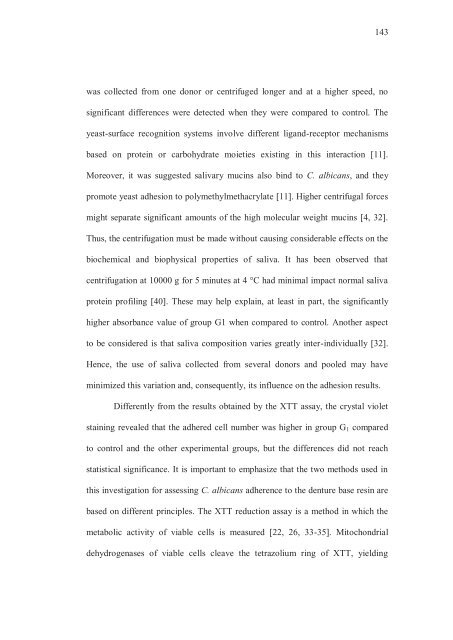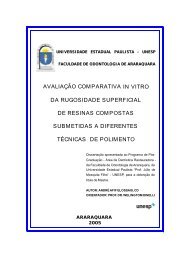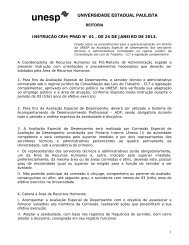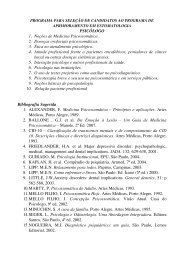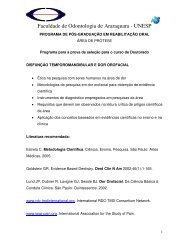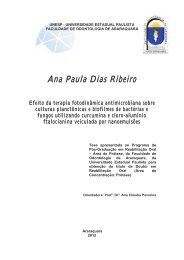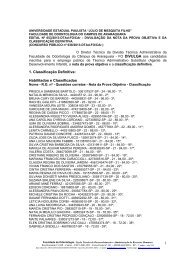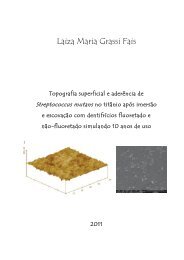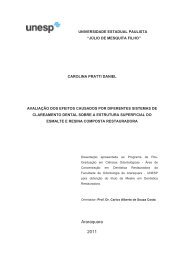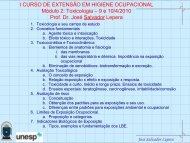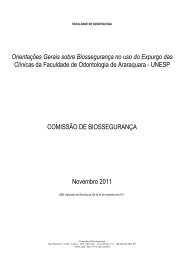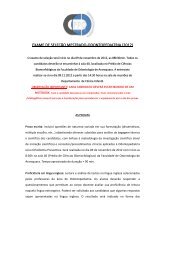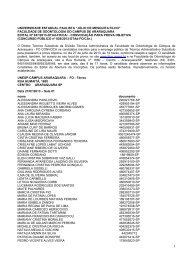universidade de são paulo - Faculdade de Odontologia - Unesp
universidade de são paulo - Faculdade de Odontologia - Unesp
universidade de são paulo - Faculdade de Odontologia - Unesp
You also want an ePaper? Increase the reach of your titles
YUMPU automatically turns print PDFs into web optimized ePapers that Google loves.
143<br />
was collected from one donor or centrifuged longer and at a higher speed, no<br />
significant differences were <strong>de</strong>tected when they were compared to control. The<br />
yeast-surface recognition systems involve different ligand-receptor mechanisms<br />
based on protein or carbohydrate moieties existing in this interaction [11].<br />
Moreover, it was suggested salivary mucins also bind to C. albicans, and they<br />
promote yeast adhesion to polymethylmethacrylate [11]. Higher centrifugal forces<br />
might separate significant amounts of the high molecular weight mucins [4, 32].<br />
Thus, the centrifugation must be ma<strong>de</strong> without causing consi<strong>de</strong>rable effects on the<br />
biochemical and biophysical properties of saliva. It has been observed that<br />
centrifugation at 10000 g for 5 minutes at 4 °C had minimal impact normal saliva<br />
protein profiling [40]. These may help explain, at least in part, the significantly<br />
higher absorbance value of group G1 when compared to control. Another aspect<br />
to be consi<strong>de</strong>red is that saliva composition varies greatly inter-individually [32].<br />
Hence, the use of saliva collected from several donors and pooled may have<br />
minimized this variation and, consequently, its influence on the adhesion results.<br />
Differently from the results obtained by the XTT assay, the crystal violet<br />
staining revealed that the adhered cell number was higher in group G 1 compared<br />
to control and the other experimental groups, but the differences did not reach<br />
statistical significance. It is important to emphasize that the two methods used in<br />
this investigation for assessing C. albicans adherence to the <strong>de</strong>nture base resin are<br />
based on different principles. The XTT reduction assay is a method in which the<br />
metabolic activity of viable cells is measured [22, 26, 33-35]. Mitochondrial<br />
<strong>de</strong>hydrogenases of viable cells cleave the tetrazolium ring of XTT, yielding


